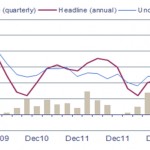A new era for Thai Tourism – Quality through Thainess

After more than 55 years of relying on the same run-of-the-mill game plan to allure tourists, Thai authorities have initiated a somewhat dramatic paradigm shift. Starting with 2016, their new strategic endpoint could be regarded as rather exotic compared to their former approach: the main attraction of the marketing plan 2016 is not quantity anymore, but quality.
So what are the strategies and objectives of this ambitious endeavor? Will they be able to assess their performance from now on? Or will the initiative prove to be just like the exemplary Thai white elephant, exquisite but useless?
Current and desired state
Very few countries invoke the fascinating, almost magical picture Thailand creates in our mind. Sapphire skies, emerald waters, golden buildings, a veritable Asian gem, attainable for a pretty small price. A real bargain, actually.
There’s no denying the fact that inexpensiveness is a constituent part of the country’s brand, just like the meditating Buddha and the wise elephant. This is why this novel decision of the country’s leading authority in the tourism department, the TAT – The Tourism Authority of Thailand, to realign their strategy, is more than surprising.
The fact that 2015 was, according to the TAT governor, a record year for tourism only adds to the curiosity of this decision:
“In 2015, the Thai tourism industry hit the highest record in our history both in terms of revenue and number of tourist arrivals […] Thailand received tourism revenue of 1.4 trillion Baht or around 42 billion US Dollars, marking a 23% increase over 2014, and a total number of international visitor arrivals of 29.8 million, which was an increase of 20% over 2014.”
As far as the tourists’ country of residence is concerned, according to the Thai Ministry of Tourism and Sports, in 2016 the vast majority of visitors came from East Asia – more than 61%, followed by Europe with a share of almost 25% and the Americas with only a little over 4.5%.
For 2016, the focus shifts from a high number of common tourists to a smaller number of high-end visitors. The target revenue is now set for around $66.5 billion, $43 billion from international markets and $23.5 billion from domestic travel, under the assumption of internal and external environment stability.
This optimistic view is also enhanced by Thailand’s advantageous central location in the Asian Pacific group, and its renown infrastructure, that offers easy access to any visitors.

Future marketing strategies
The new mission of the TAT is to enhance the country’s image as a “Quality Leisure Destination”, through the unique selling proposition of “Thainess”. Thus, tourism strategies are designed to work both on an international and on domestic level and rely on values inspired from balancing tourism growth with its impact on society and the environment.
Since, as mentioned above, the targeted income from international visitors is almost double the income brought in by natives, we may safely assume that more resources will be dedicated towards strengthening its relationship with foreign markets.
This supposition is also endorsed by the fact that, while the initiatives for local tourism development are not described in great depth yet (promotional domestic campaigns, such as “Strength from Within” will be implemented, but no details yet on the specifics), the new quality over quantity approach is starting to showcase a few concrete initiatives.
These are primarily focused on niche markets, with some examples being luxury travel, health and wellness, female travelers, golf and community-based tourism.
The new performance measurement
So what does it mean to shift the focus from quantity to quality, in terms of performance management and measurement? Well, up until now, the major tourism KPI employed by authorities was # visitor arrivals, which is clearly indicative of quantity, since it measures the number of tourist visits in a specified time frame, without making reference to the benefits brought along by these visits or to the quality of services the guests benefited from.
This KPI was replaced by three main KPIs which focus on quality instead: $ visitor expenditure (the average amount of financial resources spent by visitors during their journey), # average length of stay (indicating the average time spent by the tourists in the country) and the overall % quality of the visitor experience (which could be indicated by a satisfaction index for example, a weighted average of several survey questions, focused on different aspects of the tourists’ satisfaction in regards to their travel experience).
As already stated, the KPI used until recently, # number of visitor arrivals, was not representative for the quality of it all, since it indicated the attractiveness of a location, not the benefits it offered. Said location could be exceptionally advertised, thus attracting a great amount of people, without offering any quality services per se. The guests might never return again or drastically shorten their planned stay, but the KPI won’t indicate that.
On the other hand, the last three KPIs, money spent, time spent, level of satisfaction, measure both quantity and quality: The visitor expenditure could indicate the quality of services and products, which would be relatively proportional to the financial resources that were spent. The same goes for the average length of stay, the longer the average period spent in Thailand, the greater the quality perceived by guests.
The quality of visitor experience is, like the name obviously suggests, focused entirely on quality since it is directly linked to customer satisfaction.

Quality over quantity: A white elephant or a golden opportunity?
So was the decision to change the tourism marketing strategy, in such a drastic manner, a wise one? Will it prove to be magnificent on the outside, but really expensive and ultimately unnecessary, like a white elephant? Or will it prove to be a gold mine for the already growing tourism-oriented economy?
At this early point, we can only speculate, as Southeast Asia is known to be one of the most affordable exotic destinations on the planet. Countries like Malaysia, Philippines, Thailand, Cambodia, Indonesia, Laos, Vietnam, are quite well-known for their cultural diversity, rich cuisine, dreamy beaches, highlands and low prices.
By emphasizing and concentrating on quality, which is automatically linked to higher prices and a higher degree of luxury and somewhat inherently safety, Thailand might create a fairly unique selling proposition and distinguish itself from the rest of the region, furthering its image of a would-be lavish vacation destination.
When we think of campaigns like the “Two Countries, One Destination” one, which was conducted in close collaboration with its neighbors or the “Amazing Thailand: A Muslim Friendly Destination” campaign, and how these couple with a strong performance management system and a stable internal and external environment, Thailand might very well succeed in its quality quest.
Image sources:

Tags: Government performance, Performance in Thailand, Strategy





